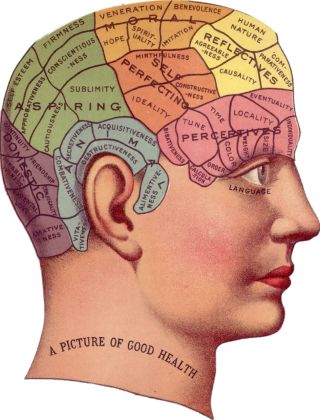Psychiatry
The Problem With Too Many Diagnoses
What we miss when we assign multiple labels to one person.
Updated November 5, 2023 Reviewed by Devon Frye

Many patients with whom I meet for the first time tell me that they have been diagnosed with a laundry list of psychiatric disorders. It is not uncommon, for instance, for a patient to tell me that they have "MDD, GAD, ADHD, and PTSD." When I occasionally review patients' past records, I find that even formal psychological evaluations conducted by clinical psychologists often list four, five, six (or more!) psychiatric diagnoses.
This practice of diagnosing the patient with multiple psychiatric disorders—what I have elsewhere called polydiagnosis—is a relatively novel trend in psychiatry. As my Tufts colleague Nassir Ghaemi (2018) has pointed out, this practice stems from the lack of a diagnostic hierarchy in psychiatry and from the field's wholesale adoption of the DSM diagnostic system, which essentially promotes listing as many diagnoses as possible (with a few limited exceptions, such as listing both schizophrenia and bipolar disorder).
Prior to the publication of DSM-III in 1980, two or more diagnoses were rarely applied to the same patient. The question clinicians asked was, "What type of illness does this patient have?" as opposed to, "Which illnesses does this patient meet criteria for?" Rather than attempting to conceptualize the clinical picture as a whole, many modern clinicians simply seek to see how many DSM criterion sets the patient's symptoms fulfill. This is usually done without considering how a more significant illness can explain the patient's other symptoms.
For instance, patients with borderline personality disorder, a severe mental illness, can present with virtually any psychiatric symptom seen in Axis I disorders: depressed mood, anxiety, agitation, impulsivity, problems with attention and concentration, psychosis, etc. If diagnosis is applied piecemeal, and the patient's total picture is not taken into consideration, four or five separate psychiatric diagnoses could be listed rather than a single "borderline personality disorder" diagnosis. This happens frequently.
So, too, with mood disorders. Patients with mood temperaments or manic depressive illness (which is now split into the categories of MDD and bipolar disorder) characteristically struggle with problems of attention, concentration, and anxiety. As Ghaemi and I have noted, this does not warrant additional diagnoses of attention-deficit/hyperactivity disorder or generalized anxiety disorder, since these symptoms can be fully explained by the mood illness (Ruffalo & Ghaemi, 2023).
The notion of a diagnostic hierarchy, which is a fundamental principle across all of medicine, has been largely forgotten by psychiatry for about the past 40 years. In sum, diagnostic hierarchy refers to the idea that not all diagnoses are created equal—that some are more important or more primary than others. Since the DSM system provides few exclusionary rules, and since clinical criteria for many disorders overlap, multiple diagnoses are frequently assigned simultaneously—creating the problem of polydiagnosis or comorbidity.
The problem of polydiagnosis is not simply a theoretical one. In practice, it can lead to inadequate treatment or overtreatment. Much has been written in recent years about the problem of polypharmacy—the use of multiple psychiatric drugs across drug classes and sometimes within drug classes—but little attention has been paid to one of its main drivers: polydiagnosis. If multiple, distinct psychiatric disorders are diagnosed, it follows that multiple treatments might be applied: a drug for this disorder, and this one, and this one. In the case of personality disorder misdiagnosed as multiple Axis I disorders, this can lead to "symptom chasing" with medication rather than appropriate treatment with psychotherapy.
This is certainly not to say that all psychiatric patients have only a single disorder. While it is best to err on the side of caution, it is conceivable that some patients have multiple forms of psychopathology occurring simultaneously. But 150 years of psychiatric and psychotherapeutic wisdom teaches us that this is largely the exception, not the rule.
As disenchantment with the DSM system grows, even within psychiatry, it is time more attention is paid to the theoretical and clinical problems posed by psychiatric polydiagnosis.
Facebook/LinkedIn image: YURII MASLAK/Shutterstock
References
Ghaemi S. N. (2018). After the failure of DSM: clinical research on psychiatric diagnosis. World Psychiatry: Official Journal of the World Psychiatric Association (WPA), 17(3), 301–302. https://doi.org/10.1002/wps.20563
Ruffalo, M. L., & Ghaemi, N. (2023). The making of adult ADHD: The rapid rise of a novel psychiatric disorder. Psychiatric Times, 40(9), 1, 18-19.


